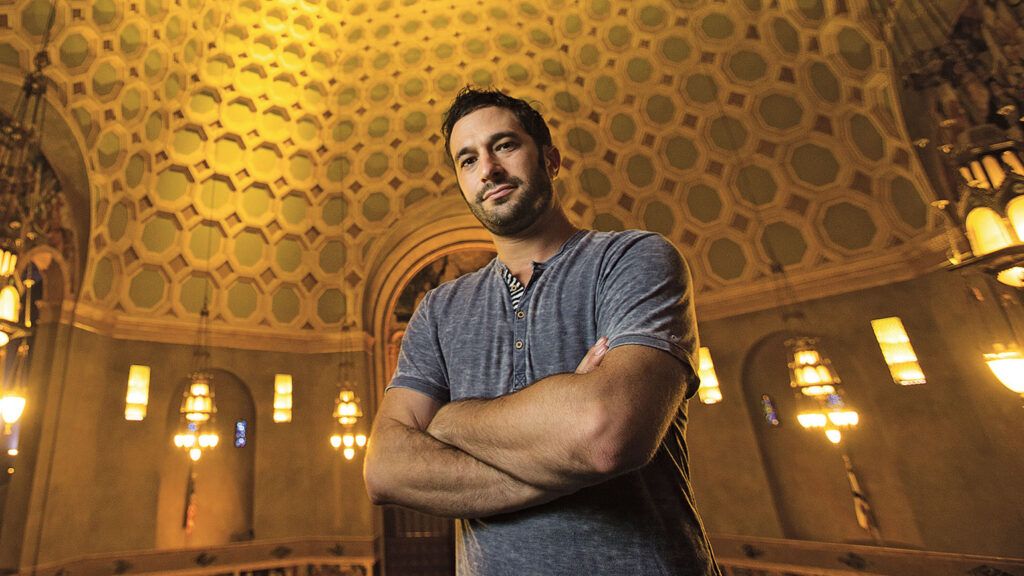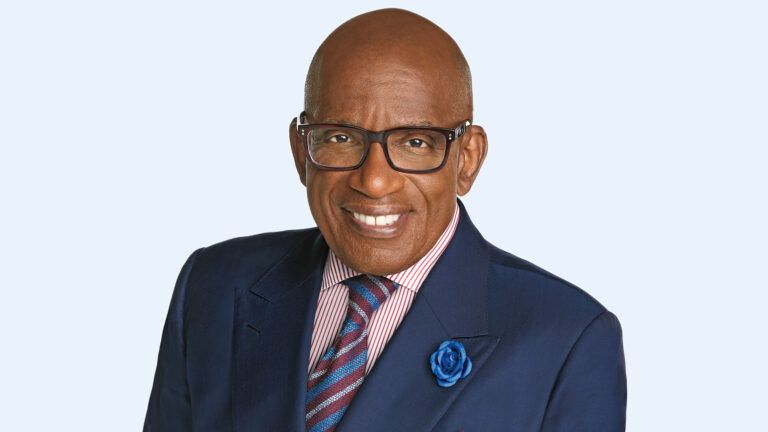One of my greatest accomplishments began during one of the lowest points in my life. I was in my rabbi’s office at the synagogue where I’d grown up and where my beloved grandfather, Alfred Wolf, had been a senior rabbi decades earlier.
I had so many cherished memories of this place. Wilshire Boulevard Temple is a landmark synagogue in the heart of Los Angeles where stars and studio moguls worshipped during Hollywood’s golden age. Martin Luther King, Jr., gave a historic address there.
I spent my childhood worshipping under the sanctuary’s soaring 10-story dome and scampering upstairs from Hebrew class to my grandfather’s office, where we’d play games or he’d enthrall me with one of his wise stories. The synagogue was showing its age by that time, and the congregation was dwindling, but I was too young to notice. I was always happy there.
STRENGTHEN YOUR FAITH WITH THESE BOOKS FROM OUR SHOP
I was not happy now. I was nearing 30, a professional filmmaker. A few weeks earlier, just a month before our wedding, my fiancée and I had abruptly broken up. I was crushed and bewildered.
The whole reason I was back at the synagogue after years of lapsed membership was my approaching marriage. Like so many young people, I’d abandoned my faith in college. Yes, I treasured my Jewish upbringing. But God and worship seemed like relics from my childhood.
I poured out my heart to Rabbi Leder. He consoled me and tried to help me understand that, though today felt awful, it wouldn’t always feel this way.
Now I was meeting with him in his spacious office, with its fireplace and beautiful, if worn, wood-paneled walls, when he said something unexpected.
“I have an idea that might take your mind off your romantic troubles. As you know, we’re about to start a big renovation project here. The temple is falling apart. I’m sure you’ve seen the tarp we put up in the sanctuary to catch the plaster falling from the dome. Hebrew-school classes are shrinking. People have even advised us to sell the campus to one of the big Korean churches in this neighborhood.”
He looked at me intently. “We are not going to sell. We are going to save this place and reinvent it as a vital place of Jewish community. It’s going to cost more than a hundred million dollars, but we’re going to do it right. What if you and your film company documented the process, making a few online videos for us to keep donors abreast of our progress? You seem to have enjoyed being back here. This would give you a reason to stick around.”
READ MORE: A SANCTUARY FOR ALL
I wasn’t sure how to respond. My company mostly makes narrative and commercial films, not documentaries. It seemed like a huge responsibility. But then something struck me. Rabbi Leder was right. I had enjoyed being back at the temple. Anticipating marriage and kids had changed my thinking about faith.
I didn’t necessarily want to become a regular worshipper. But I didn’t want to lose touch with my spiritual heritage either. And yes, making a new kind of film would distract me from my heartbreak.
“Okay,” I said. “I’ll give it a try.”
Soon I was setting up interviews and documenting the start of renovation. I quickly realized that I would have to film more than construction. The temple’s legacy was at stake. I’d have to explain what it all meant.
I talked with temple leaders and learned about the synagogue’s history. It was Los Angeles’s first Jewish congregation, founded in 1862 as Congregation B’nai B’rith (“Children of the Covenant”), with a handful of families, when L.A. was just a small frontier town. The original building was designed to look like a church, to deflect anti-Semitism.
The congregation grew until, by the 1920s, temple leaders realized that the city’s Jewish population was moving west, closer to the movie studios that were making Hollywood a household name.
The current temple was dedicated in 1929. It featured the lavish domed sanctuary, along with black marble, gold inlay, and murals commissioned by the Warner brothers who had founded the iconic film studio.
For decades, the temple was nationally prominent, the hub of Jewish Hollywood. But beginning in the 1980s, just as I began attending as a kid, decline set in. L.A.’s Jews moved out to the suburbs. The neighborhood around the temple got rougher.
READ MORE: FASTING FOR YOM KIPPUR
Photos from the Hebrew school show gradually diminishing classes, until just a few kids were being confirmed each year. My family probably wouldn’t have attended the temple if my grandfather hadn’t been a rabbi there.
In recent years, though, the neighborhood had changed yet again to become a magnet for Korean immigrants and young hipsters—including young Jewish families. I filmed the construction, but by that point I knew the building wasn’t the whole story.
Wherever I went with my camera, people talked not about architecture but about their lives at the temple. Their faith. Their memories. Their family history. A past president of the congregation told me about how he fainted at his own wedding and my grandfather, who was officiating, caught him.
A longtime member opened a photo album for me in her living room. Every milestone in her life seemed to involve the temple. She too had known and loved my grandfather.
I could hardly keep track of how many lives this grand place of worship had touched. The building, I realized, mattered only insofar as it drew people together.
The reality of the place was the relationships it fostered. And the countless ways people experienced God during Friday prayers, at High Holiday services, in Hebrew school, even at the Jewish summer sleepaway camp my grandfather had founded in Malibu, the first of its kind in the western United States.
The ways people experienced God.
How long had it been since I’d thought seriously about God? By the time I started college, I naïvely considered myself too worldly for faith. But things had happened since then. A few years earlier, I’d been staying over at a friend’s when I woke up in the middle of the night and felt a powerful urge to get back to my parents’ house right away.
I could neither explain nor resist the urge. Alone on the road, I began thinking about death and I felt very frightened. Then, out of nowhere, a strange calm came over me and I thought of my grandparents. I pulled into the driveway at home and saw the lights on.
My mom and younger sister were inside, crying. My grandfather had had a stroke and died—right at the moment I’d felt that sudden calm in the car.
I hardly told a soul about that experience. Now, interviewing people for what was growing into a full-length film, I realized what a strong force faith was in people’s lives. Was it strong like that for me? I thought back to my most formative faith experiences.
READ MORE: COOKING TO SHOW YOU CARE
To be honest, not many happened during worship at the temple, which I found kind of boring as a kid. No, I’d experienced God more indirectly, often through my grandfather.
He wasn’t just the wise, vigorous man who’d taken me on hikes and played games with me in his office. He’d shown me what it looked like to love people well. To take care of countless souls gathered together in the temple he helped to lead.
One day, I turned my camera on myself and began telling my own story. How I’d grown up at the temple, always sitting with my family in Row H of the sanctuary, on the left-hand side. How I’d gone through Hebrew school. Been a counselor at the temple sleepaway camp. Then gradually abandoned my faith.
“I took this place for granted,” I said. Now I couldn’t imagine my life without it.
The renovation took nearly five years. The entire inside of the sanctuary was taken apart and rebuilt. The Hebrew school was overhauled. Work began on a new cultural center. The decrepit classrooms where I’d learned Bible stories got sleek rows of computers and brightly colored desks and chairs.
A historical exhibit was installed outside the sanctuary, with photos of past members—Louis B. Mayer, Jack Benny—and even a counselor’s red jacket from the camp. The project was a huge gamble. What if all those millions were spent and no one came?
They came. Today, attendance is up and High Holiday services are full. The early-childhood program is growing. There is a rooftop sports complex. Neighborhood people of all faiths and ethnicities come for help at the social-services center. Everyone is welcome.
I’m one of those new members. Or maybe I should say I’m a returning member. I pledge regularly and I’m here for every High Holiday service. Since my film was completed and I’ve begun showing it to audiences, the temple has become a second home to me, as I speak at screenings or give tours to people who’ve seen it.
The film is called Restoring Tomorrow. I’m showing it at film festivals and theaters, and ultimately I plan to air it on PBS, Netflix and Amazon.
I screened it for an audience that included members of an African-American church here in L.A., and afterward church members came to me with tears in their eyes, saying that the movie made them even more determined to ensure the survival of their own house of worship.
The film ends with me sitting in my family’s row in the sanctuary. I explain to the camera what the temple means to me now, how important it is that this place—indeed, all such holy places—is preserved and handed on to future generations.
The camera cranes up until it’s almost at the ceiling, taking in the sanctuary, filling the viewer with the same sense of religious awe I get every time I come here.
The film’s title, I think, says it all. The temple has been restored for tomorrow. And so have I.
Did you enjoy this story? Subscribe to Guideposts magazine.





